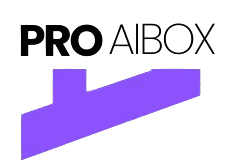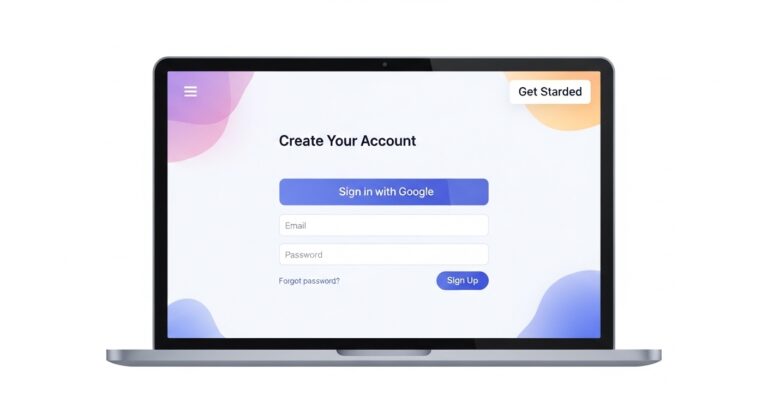Have you ever spent hours writing a blog, feeling proud of it, only to check Google and see it hiding on page five or six? Ugh, right? You know people aren’t seeing your work, and it feels like all that effort went to waste.
That’s where AI SEO tools and Agile solutions come in. Don’t worry, those sound fancy, but here’s the simple version:
Think of AI SEO tools as a buddy sitting next to you while you write. They quietly point out what’s missing, suggest better words, and even show how other blogs cover the same topic. Agile is just a way to do your work in small, easy steps. Instead of trying to do everything at once, you write one post, see how it goes, fix it, and then move on to the next.
When you use AI SEO tools with this method, SEO stops feeling scary. Your content actually gets noticed, and you don’t feel overwhelmed. Let’s go through it step by step with easy examples anyone can follow.
Let’s walk through how this works, step by step, with examples that anyone can follow.
What Is AI SEO?
A few years ago, SEO was simple. Pick a keyword, sprinkle it through your article, and hope Google noticed. Today, Google is way smarter. It wants content that actually helps people, is trustworthy, and covers the topic well. Just throwing in keywords won’t cut it anymore.
AI SEO is basically a smart helper. IIt checks out other pages that are already doing well and shows you what works. For example, if you’re writing about “homemade chocolate cake,” the tool can suggest which words to use, what tips to add, and even how long your post should be. It’s like a friend whispering: “Don’t forget cocoa powder here, add a tip about baking time there, and your post will do better on Google.”
It even helps make your writing sound natural. You’re not just writing for robots, you’re writing for people.
Why You Might Need AI SEO Tools?
Think about a small bakery blog. You want to rank for “best chocolate cake recipe.” Without guidance, you might guess what readers want. Maybe you add some steps, maybe you forget important ingredients.
AI SEO tools take that guesswork away. They check top articles, suggest words like “moist,” “homemade,” or “cocoa powder,” and even guide you on how to organize your post: start with an intro, list ingredients, add step-by-step instructions, and finish with FAQs.
It’s like following a trusted recipe instead of experimenting blindly. You save time and your post has a much better chance of showing up on Google’s first page.

AI SEO Tools You’ll Actually Like
There are tons of AI SEO tools, but here are the ones beginners love:
Surfer SEO – Think of it like a report card for your article. Paste your post and it shows you what’s missing, like keywords or headings. Easy to see and fix.
Clearscope – Focuses on words people are actually searching for. Writing about remote jobs? It might suggest “freelance,” “digital nomad,” or “work-from-home tips.”
Frase – Helps you plan your article, make outlines, and even gives draft suggestions. Beginners love it because it feels like a co-writer.
SEMrush & Ahrefs – Big toolkits. They track your website, check competitors, and give you a big picture of how your site is doing.
Jasper & Writesonic – AI writing assistants that can draft content for you. You still tweak it, but it saves hours of writing from scratch.
What Is Agile in SEO?
Agile sounds technical, but it’s actually super simple. It just means breaking your work into small steps, checking results, and improving as you go. Even if you’re writing alone, Agile keeps you organized and prevents overwhelm.
For SEO, it works like this:
- Set a small goal for two weeks, like writing three blog posts.
- At the end of two weeks, check what worked. Did your posts get clicks? Did people stay on your page longer?
- Fix what didn’t work, then plan your next two-week cycle.
How AI SEO and Agile Work Together?
AI tells you what to do, and Agile tells you how and when to do it.
For example, AI might suggest five words you missed. Agile helps you plan a small cycle to include them. You write, check results, tweak, and repeat.
It’s like baking cookies in batches. Instead of making 100 at once and hoping they taste good, you bake 10, see how they turned out, then make the next batch even better.
A Beginner-Friendly Step-by-Step Roadmap
- Set a Goal – Traffic, leads, or sales? Example: “Get 5,000 visitors a month in six months.”
- Pick a Tool – Frase or Surfer are simple starters.
- Find Keywords – Use SEMrush, Ahrefs, or free Google tools to find the words people actually search.
- Plan Your Sprints – Two-week cycles work well. Sprint 1: write three blogs. Sprint 2: fix old posts. Sprint 3: share or promote your content.
- Write & Edit – Draft with Jasper or Writesonic, then check with Surfer or Clearscope. Always make it sound like you’re talking to a friend.
- Check & Improve – After each sprint, see what worked, and tweak your next sprint.
Real-Life Stories
Bakery Blog – A small bakery used Surfer to optimize recipes. Posts like “moist banana bread” hit the top five in three months. More readers turned into more local customers.
Startup – A small SaaS company wrote five AI-optimized blogs, then built links. Six months later, traffic tripled.
Freelancer – A writer used Frase to improve client blogs. Agile cycles helped her finish more content faster and improve results, letting her charge more.

Benefits of Combining AI SEO Tools and Agile
Using AI SEO tools and Agile together gives you:
- Saves Time: AI does research and optimization quickly.
- Scalable: Agile keeps work organized and repeatable.
- Beginner-Friendly: You don’t need to do everything at once.
- Data-Driven: Decisions are based on insights, not guesses.
- Continuous Improvement: Each sprint helps you perform better.
The Future of SEO with AI and Agile
SEO is shifting toward AI-powered search experiences, like Google’s AI Overviews. Content must be clear, helpful, and well-structured. Businesses that adopt AI SEO tools and Agile workflows can scale faster and compete even as search engines get smarter.
Final Thoughts
AI SEO tools and Agile aren’t scary, they’re just smart ways to work. Even beginners can write posts, check what works, and improve without stress.
Start small. Pick one AI tool, plan a simple sprint, and take it from there. Over time, your content will grow, rankings will improve, and your website traffic will increase. With AI and Agile, SEO stops feeling like a mystery and becomes a system that works.
FAQs
1. How can AI SEO tools help me find trending topics?
AI SEO tools track what people are searching for online. They suggest topics that are popular right now, so your content is more likely to attract readers.
2. Do I need technical skills to use AI SEO tools?
Not at all. Tools like Frase, Surfer, and Jasper are designed for beginners. You just follow the suggestions and write.
3. How often should I update my old content?
Every 2–3 months is ideal. AI tools can show which pages are underperforming and suggest updates to keep your content ranking.
4. Can AI tools help me write FAQs for my articles?
Yes! Many tools suggest common questions people search for. Adding these makes your content more useful and can boost your SEO.
5. How many keywords should I include in one article?
Focus on one or two main keywords and a few related phrases. Too many keywords can confuse readers and search engines.
6. Is Agile only for big teams?
No. Even solo bloggers can use Agile. Small, manageable sprints keep work organized and make SEO less overwhelming.
7.Can I trust every suggestion from AI SEO tools?
AI suggestions are meant to guide you, not dictate every move. Check if each suggestion makes sense for your content and your audience. If it adds value, include it; if not, skip it.
8. Can AI SEO tools help with local SEO?
Yes. They suggest location-specific phrases to help your business show up in local searches, like “best coffee shop in New York.”
9. How much time can AI SEO tools save?
Beginners often cut research and drafting time by 50% or more, allowing them to focus on creating better content.
10. Where should I start if I’m completely new to AI SEO and Agile?
Start small. Pick one AI tool, write one article, and plan a simple two-week sprint. Learn as you go, then gradually expand.







